Care and repair: tips for maintaining your outdoor gear
Good quality outdoor clothing is an investment. A purchase often requires a bit or research into what items you need and into technical specifications like waterproofing, insulation, and breathability. Once you've made your choice, you probably hope to enjoy your new gear for a long time. Good news: you have significant influence on the longevity of your outdoorgear yourself. By using, maintaining, storing and repairing your products with care, you can maximize their lifespan. Read along to learn how to do this.

Washing by Material
The average outdoor enthusiast’s wardrobe includes a range of items: lightweight base layers, insulating mid-layers, and waterproof shells. Attention is especially required for clothing that needs to be breathable or waterproof. Below, we outline the most commonly used materials in outdoor clothing and their washing instructions:
Merino Wool is often used as a base or mid-layer under waterproof clothing. It is naturally breathable, insulating, and odor-resistant, even when wet. This makes it ideal for cold, damp conditions. Thanks to its odor-resistant properties, it’s perfect for lightweight trips and doesn’t need to be washed after every use. At the end of your trip or before storing, you can wash your merino wool clothing on a wool wash cycle with a special wool detergent.
Fleece is a lightweight, quick-drying, and warm material made from synthetic fibers, popular for insulating layers and linings. Fleece is durable and requires minimal maintenance. However, when washing, it releases microplastics into the water. To prevent these from entering the water system, you can use a special washing bag that traps the microplastics before they are drained.
Down is used for insulating layers like padded jackets. It requires special care, as a down jacket cannot simply be washed with regular clothing. Standard detergent damages the down's quality, so always use a specialized down detergent and wash it on a delicate or low-temperature program. Drying is best done in a dryer on low heat, with dryer balls (or tennis balls) to prevent clumping. Read all about washing your down sleeping bag in our article 'Washing your sleeping bag: This is how you do it'.
An alternative to down is synthetic insulation (e.g., NOMAD Re-Polarschield). This material is warm and breathable, and retains its insulating properties even when wet (unlike down). It also requires less care during washing and can often be washed with regular detergent at 30˚C.
Waterproof layers are often made from polyester and nylon, with a membrane or coating to ensure waterproofing. A key property of these layers is their ability to keep the elements out while allowing body heat and moisture to escape. Over time, dirt and oils can accumulate, compromising the fabric's breathability. Regular washing is therefore important. Wash according to the program recommended on the care label, using a detergent specifically for outdoor clothing. Drying is best done in a dryer on a medium/warm setting to reactivate the coating. When water no longer beads on the surface but starts soaking in, you can restore the water-repellent coating with an impregnating spray.
If in doubt, follow these guidelines:
- Check the care label for washing and drying advice.
- Use a special detergent for technical clothing.
- Avoid fabric softeners and standard detergents.
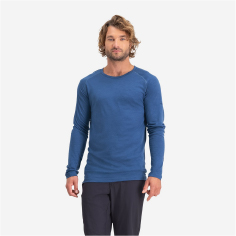

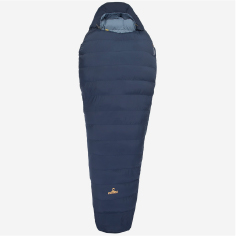
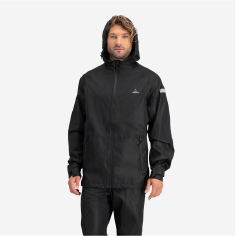
Storage
The use of outdoor clothing is often seasonal, such as during vacations or rainy autumns. When storing your clothing between uses, consider the following tips to prevent wear and maintain waterproof properties:
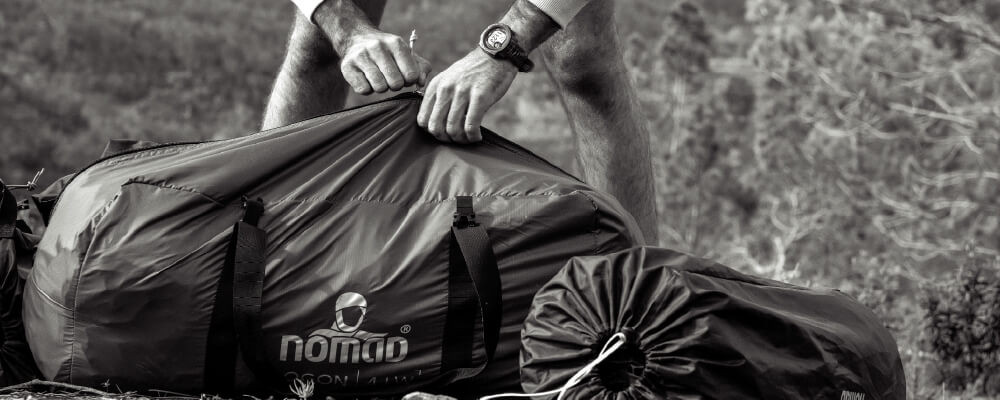
-
Store without compressing
Waterproof clothing should be stored in a dry and well-ventilated area. Avoid folding or compressing the clothing in a closet or bag, as this can damage the membranes and reduce waterproof functionality. Ideally, hang the clothing on a hanger to prevent creases and maintain the fabric's original condition. If you must store it folded, ensure that zipper sections are not creased. -
Avoid exposure to sunlight or high temperatures
Always store your clothing in a cool, dark place. Prolonged exposure to direct sunlight can damage the materials of waterproof clothing, reducing effectiveness. Sunlight can also cause colors to fade. Additionally, high temperatures, such as those from a dryer or radiator, can damage waterproof coatings or membranes.
Repairing Outdoor Clothing
Even with proper maintenance, waterproof or insulated outdoor clothing can wear out or become damaged over time. Common damages and how to repair them:
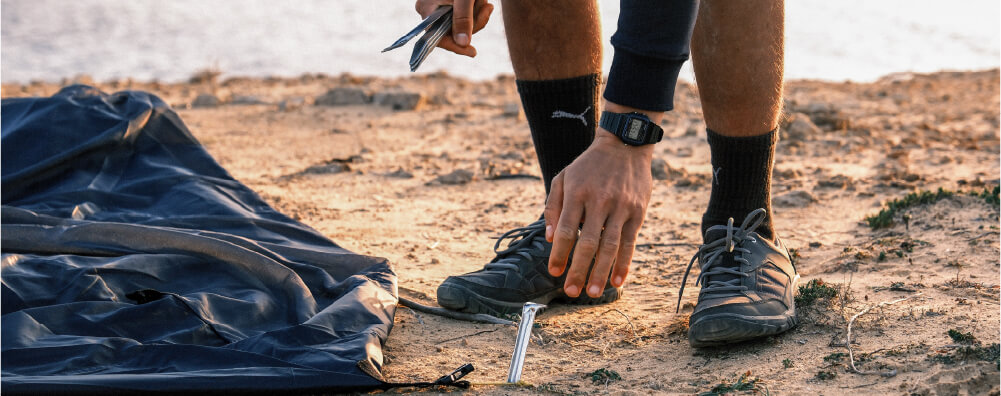
Tears and Holes
Branches, rough surfaces, or intensive use can lead to small tears or holes, compromising waterproofing and insulation.
Use repair tape or patches specifically designed for technical fabrics. Cut the patch to size and firmly apply it to the damaged area. For extra durability, apply the patch to both the inside and outside of the garment. Our range of repair patches for sleeping bags and mats works great for similar technical items too!
For larger tears, you can glue seams with special textile glue or have the piece professionally stitched.
Worn Seams
Taped seams that contribute to waterproofing can loosen or wear over time. These can be reattached with special seam glue or taped repair strips. Ensure the area is clean and dry before applying the tape.
Regularly inspect seams to prevent future damage.
Worn Water-Repellent Coating
Prolonged use and (incorrect) washing can degrade the water-repellent coating, reducing the garment's waterproofing. When water no longer beads on the fabric, it’s time to restore the water-repellent layer with an impregnating spray or special detergent. Apply the product according to instructions and activate the coating with heat, such as by using a dryer or gentle ironing.
Broken Zipper
A stuck or broken zipper can be quite inconvenient. In the best case, it’s annoying; in the worst case, it renders your garment unusable. Fortunately, minor issues like a stiff zipper can often be resolved with a zipper repair kit or a bit of lubricant, such as candle wax or silicone spray.
If the zipper is completely broken, consider replacing it. Check out our Service & Repairs page for a list of recommended repair services.
Professional Repair Services
Beyond zipper repairs, specialized repair services can handle other major or complex repairs. Typical repairs include:
- Replacing membranes or coatings.
- Repairing large tears in technical fabrics.
- Replacing zippers or other fasteners.
Using professional services helps maintain the quality and functionality of your clothing.
Prevention and Future Maintenance
Repairing is important, but prevention is better! With a few simple precautions, you can minimize damage to your outdoor clothing:
- Avoid sharp objects and rough surfaces during use.
- Regularly inspect for small damages and repair them immediately.
- Use protective covers during storage and transport to prevent wear.
By performing minor repairs yourself and having larger damages professionally fixed, you can significantly extend the lifespan of your waterproof and insulated clothing. This benefits not only your wallet but also contributes to more sustainable use of your outdoor clothing.
